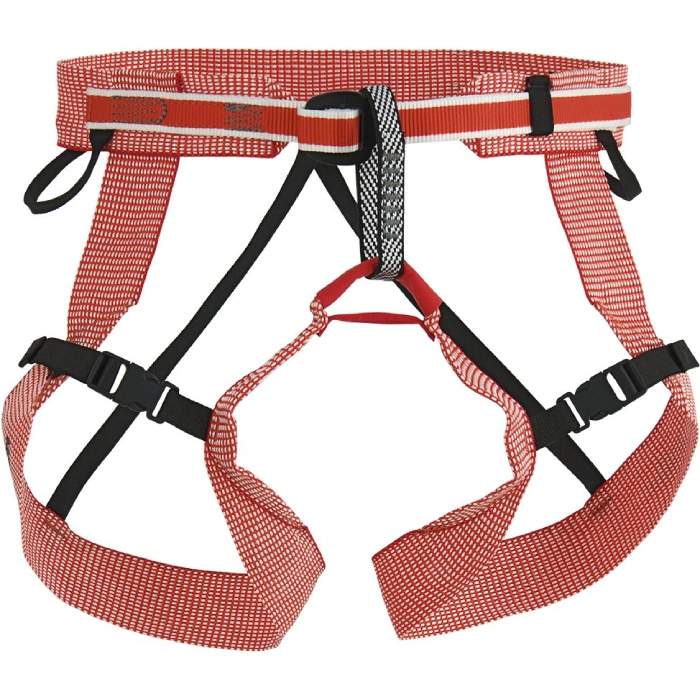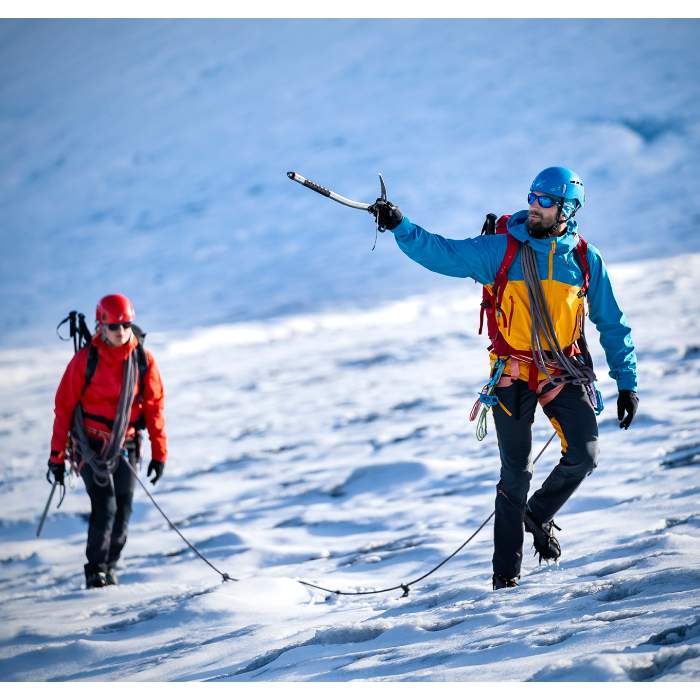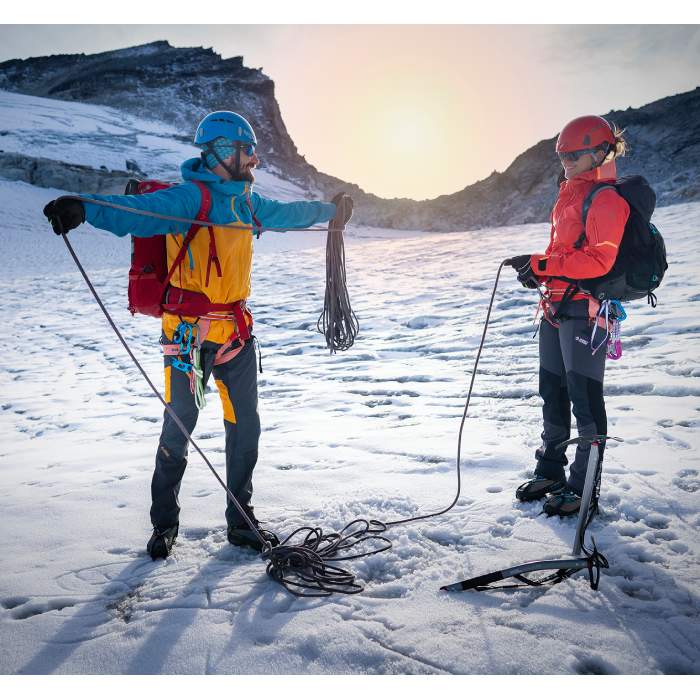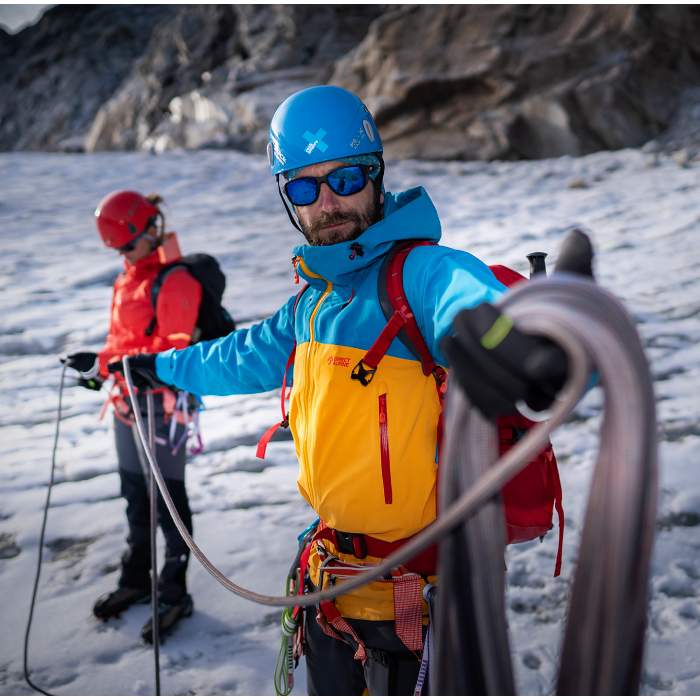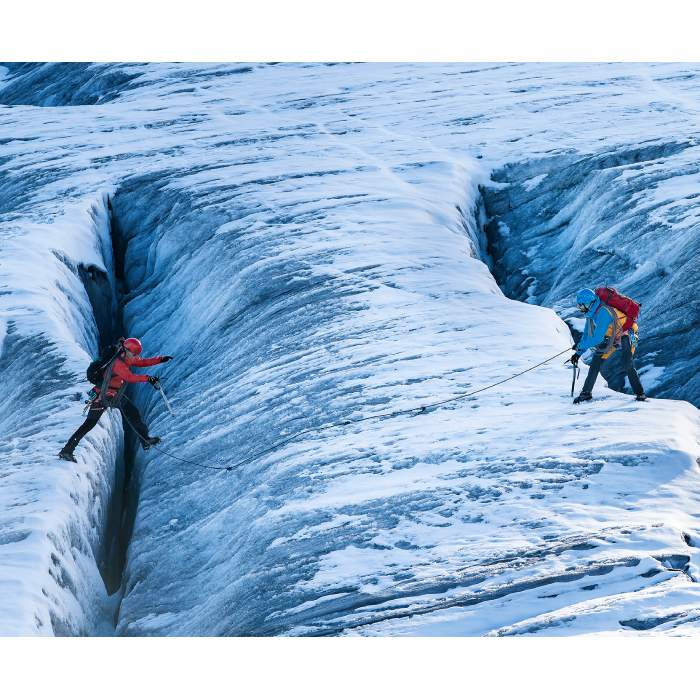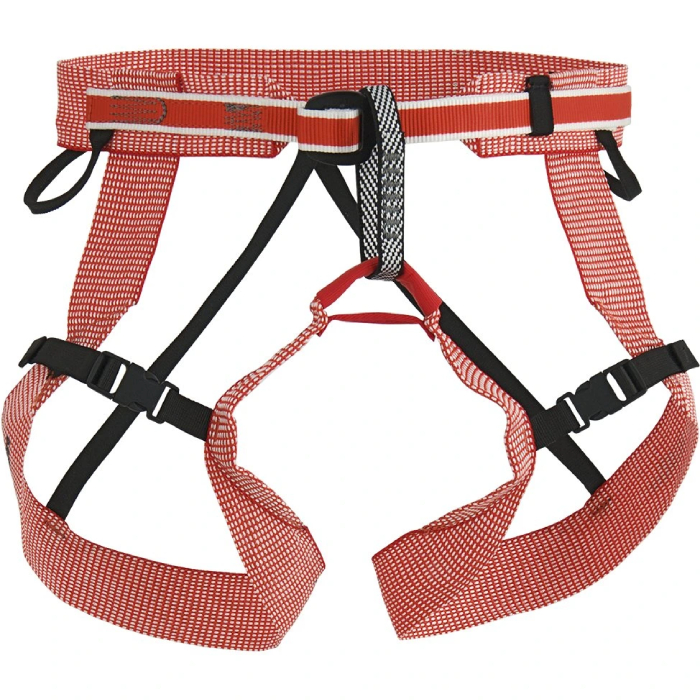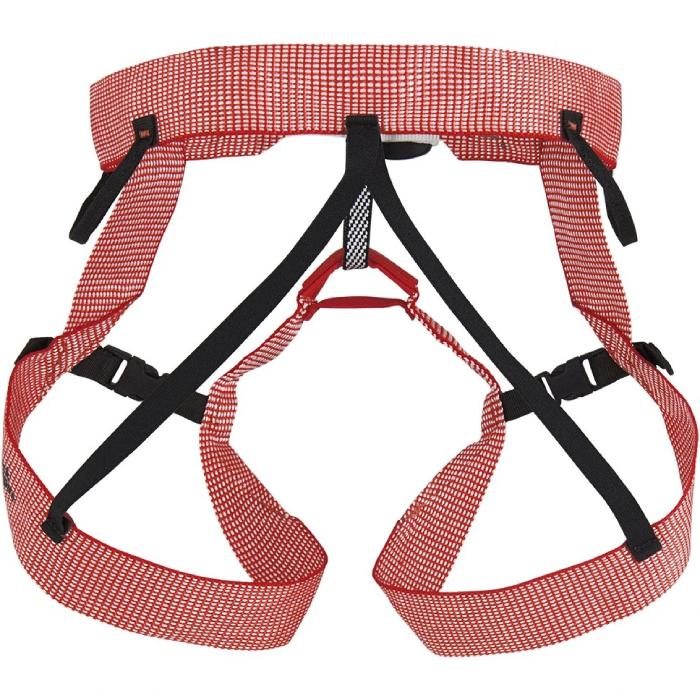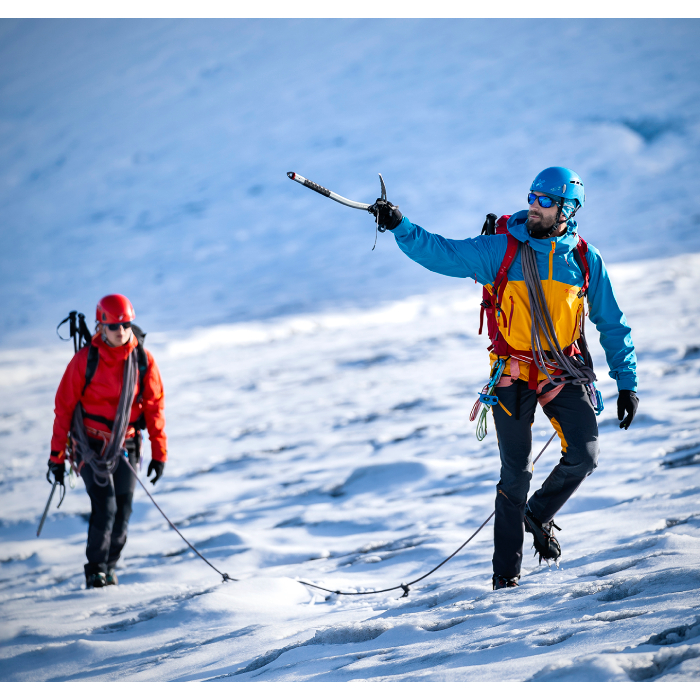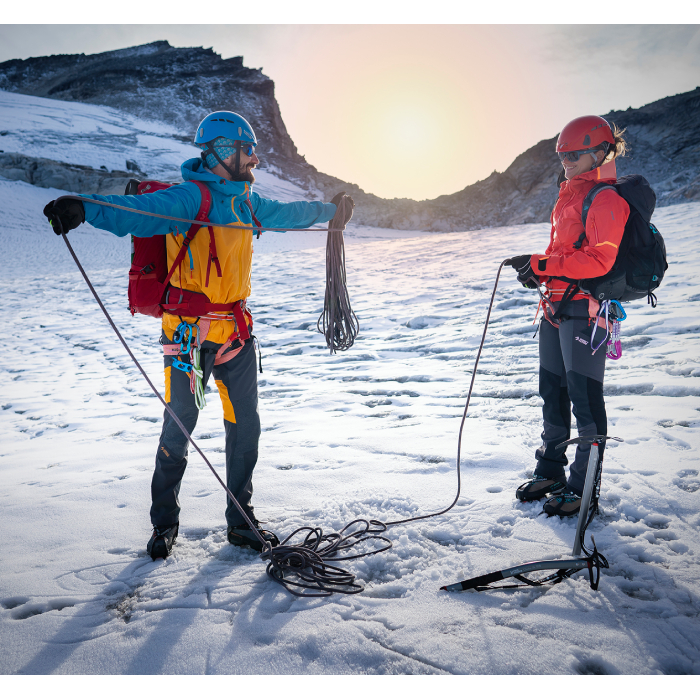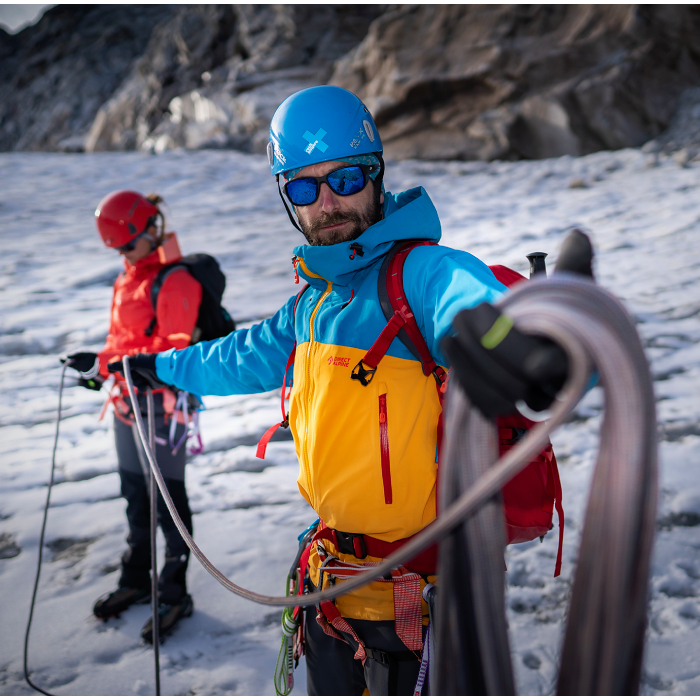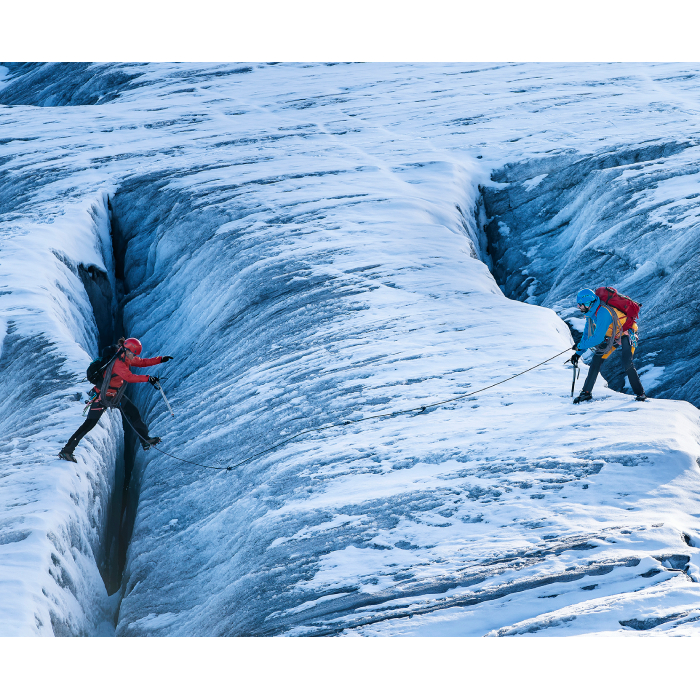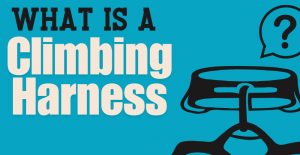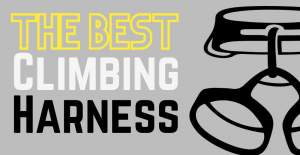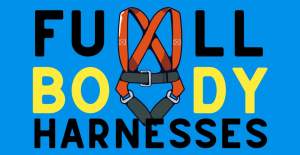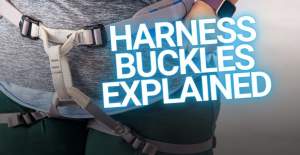Safety and Technical Information for Rock Empire Harnesses
Superlight
Description
How many times have you fallen into crevasses when on ski alpine trips? And how many hours have you spent exploring the bowels of an Ice Kingdom? For those who prefer to move on the surface of the glacier, rather than inside it, Rock Empire has designed the ultra-lightweight sit harness, Super Light.
How many times have you fallen into crevasses when on ski alpine trips? And how many hours have you spent exploring the bowels of an Ice Kingdom? For those who prefer to move on the surface of the glacier, rather than inside it, Rock Empire has designed the ultra-lightweight sit harness, Super Light.
A super light-weight, safe and simple harness specially made for ski touring and use on glaciers.
Leg straps have buckles for easy on and off while wearing crampons or skis. One of the lightest
- 1 Gear loop
- Fully adjustable
This harness was among the required safety gear for all Elbrus Race participants. To our delight, Super Light was seen at every step.
Retail price
This Product is Hard to Find.
We don’t know where you can buy this item online in the US. We’ll continue to check all the major retailers and will update this page as soon as we find one.
If you know where to find this online in the US, let us know, and we’ll add the link.
Weight (g)  WeightIn grams, the weight, as stated by the manufacturer/brand. If there are differences in weight (due to multiple sizes or optional accessories) we'll list them here. The default weight is the middle-most size, often this is size M. | 146 g XS-M: 146 g / 5.2 oz |
| Fit | Unisex |
| Sizes | XS, S, M, L, XL, XXL, 1 Size Fits All |
Gear Loops  Number of Gear LoopsGear loops are used to hold gear (quickdraws, cams, etc) onto your harness. 4 gear loops is most common. 
0 - 1 Gear LoopsMost often on full body harnesses or guide/gym style harnesses. 2-3 Gear LoopsMostly found on lighter harnesses made for [ski] mountaineering or high-end sport climbing where weight is a high priority. 4 - 5 Gear LoopsThe standard/most common number for climbing harnesses. Perfect for sport and trad. More Than 6 Gear LoopsDesigned for long multi-pitch and big wall climbing, found on harnesses made to hold the maximum amount of gear. Worth ConsideringOccasionally, the number of gear loops will change on a harness model depending on the size. There could be 7 gear loops for the med/large but only 5 gear loops for the xsmall/small. In this case we list the highest number for the filters, and then write an explanation on the product page like, “Size S/XS can only fit 5 gear loops.” | 1 Gear loops |
Ice Clip Slots  Ice Clip SlotIce clipper slots are made to fit a carabiner that holds ice screws. These slots are generally only used by ice climbers but there is no disadvantage to having them on your harness. 
Less than 40% of harnesses will have ice clipper slots. And those harnesses will usually have 2 or 4 slots, often located next to, or between, the gear loops. | No |
| Belay / Tie-In | One Loop |
| Waist Buckle Type | Manual Doubleback |
| Leg Buckle Type | Clip |
| Drop Seat | No |
Haul Loop  Haul LoopTrad climbers often look for a haul loop as they're intended to haul a rope (second line) or pack (while you climb the chimney). 
A haul loop can also hold shoes or other accessories. Although not the intended use, it is also commonly used to hold a chalk bag. | No |
| Certification | EN |
| Size Chart | XS-M
Waist: 57-85 cm / 22.4-33.4 in Legs: 43-62 cm / 16.9-24.4 in L-XL (will fit the lower range of XXL)
Waist: 85-100 cm / 33.4-39.3 in Legs: 62-71 cm / 24.4-27.9 in (we converted centimeters to inches)
|
No reviews yet.
If you know of a good product video that should be here, let us know, and we'll put it up.
If you're looking for gear videos in general, check out our Vimeo and YouTube channels to see the newest gear.
A pictoral representation of UIAA-105 and EN-12277 standards for harnesses.
The UIAA equipment standard provides a baseline for equipment performance in a test lab under controlled conditions on new equipment. Although these test conditions are relevant to the conditions encountered climbing, conditions encountered at the crags and the condition of the equipment are equally important. This recommendation from the UIAA member federation The British Mountaineering Council (BMC) provides vital equipment information that is NOT explicitly addressed in the standard, particularly failure modes of the equipment and recommendations for the use, inspection, maintenance, and retirement of equipment.

